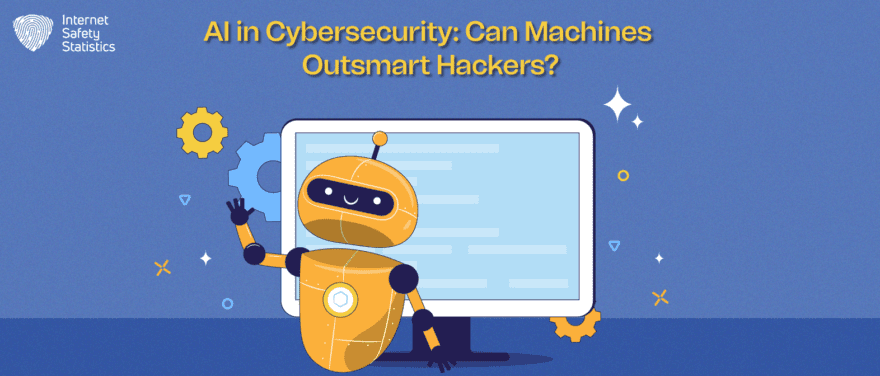
The digital world is under siege. Hackers, the modern-day pirates of the internet, roam the vast cyber seas, seeking to plunder valuable data and wreak havoc. Traditional defences seem increasingly inadequate, like wooden ships against cannons. But fear not, for a new weapon has emerged from the tech horizon: Artificial Intelligence (AI).
Imagine a sleek, metallic cyborg patrolling the digital networks, its neural circuits humming with algorithms and analysis. This is not science fiction, but the cutting edge of cybersecurity. AI offers a powerful arsenal of tools that can outmanoeuvre hackers, predict their attacks, and respond with lightning speed.
But can machines truly outsmart human ingenuity, even when it’s bent on malicious intent? Is AI the knight in shining armour we’ve been waiting for, or just another tool in an escalating arms race? Join us as we delve into the fascinating world of AI in cybersecurity, exploring its potential, limitations, and the thrilling battle between artificial and human intelligence on the digital frontier.
Can AI truly outsmart hackers? Let’s find out.
What is the Role of Artificial Intelligence in Cybersecurity?
To combat cybersecurity threats, artificial intelligence (AI) plays a significant role in enhancing defences and securing our data. Here’s a breakdown of its key roles:
1. Enhanced Threat Detection and Analysis
Imagine a vast ocean of data, with traditional methods like nets struggling to catch the small fish. AI submarines, on the other hand, effortlessly navigate the depths, pinpointing even the tiniest anomalies.
- AI algorithms analyse immense datasets in real-time, searching for subtle patterns and indicators of compromise (IOCs) that might go unnoticed by human analysts. This proactive threat detection allows you to identify and neutralise attacks before they even cause damage.
- Machine learning models can continuously learn and adapt, staying ahead of ever-evolving threats and recognising even novel attack tactics.
2. Automated Response and Remediation
Picture a superhero rushing to the rescue, but instead of a cape, they have a lightning bolt. That’s AI in action!
- AI can automate initial response tasks, like isolating compromised systems, notifying security teams, and even initiating countermeasures like blocking malicious traffic. This rapid response significantly minimises the impact of a cyberattack, buying you precious time to strategise further actions.
- Automated remediation capabilities can further reduce human intervention, freeing up security personnel to focus on complex analysis and strategic decision-making.
3. Proactive Vulnerability Management
Imagine a vigilant knight constantly scanning a castle for weak points, patching them up before attackers can exploit them. That’s AI for your vulnerabilities!
- AI can automate vulnerability scanning and prioritisation, focusing on the most critical ones for immediate patching. This proactive approach keeps your systems and networks one step ahead of attackers, leaving them with fewer entry points to exploit.
- Predictive models can anticipate potential vulnerabilities before they even appear, further strengthening your security posture.
4. Enhanced User Authentication
Think of a digital fortress with multiple layers of security, with AI as the ultimate gatekeeper.
- AI can analyse user behaviour, device characteristics, and even typing patterns, identifying and preventing unauthorised access attempts. This multi-layered approach makes it much harder for attackers to impersonate legitimate users and gain access to sensitive systems.
- Adaptive authentication can adjust based on risk factors, providing an additional layer of defence against sophisticated social engineering attacks.
5. Threat Intelligence Gathering and Prediction
A futuristic crystal ball is showing glimpses of future cyber threats, thanks to AI’s predictive power.
- AI can analyse data from various sources, including dark web forums and social media, to identify emerging threats and attack trends. This proactive intelligence gathering allows you to anticipate attacker tactics and adapt your defences accordingly, staying ahead of the curve in the ever-changing cybersecurity landscape.
- Predictive models can forecast potential attack targets and timing, enabling you to proactively allocate resources and prepare for potential assaults.
6. Security Operations Optimisation
AI can free up valuable human resources by automating routine tasks and providing actionable insights. This allows security teams to focus on:
- Incident investigation and forensics: AI can assist in analysing large datasets of attack information, pinpointing root causes, and gathering evidence.
- Security policy optimisation: AI can provide data-driven recommendations for improving security policies and procedures.
- Security awareness training: AI can personalise security awareness training based on individual user behaviour and risk profiles.
Benefits of AI in Cybersecurity
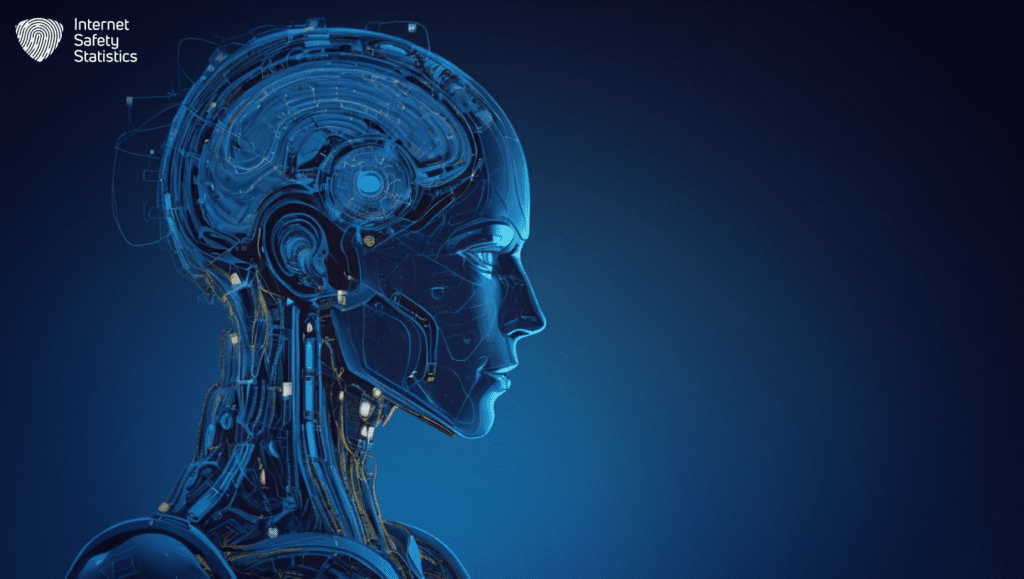
This game-changer brings a wave of benefits to the cybersecurity realm, enhancing protection and empowering defenders against malicious actors. Let’s dive into the key advantages AI offers:
1. Supercharged Threat Detection and Analysis
Gone are the days of sifting through mountains of data manually. AI algorithms excel at analysing massive datasets in real-time, pinpointing anomalies and patterns that might indicate a brewing cyberattack. Think malware infections, phishing attempts, and unauthorised access – AI can sniff them out before they even have a chance to wreak havoc.
2. Lightning-Fast Response and Remediation
Time is of the essence when it comes to cybersecurity. AI can automate initial response tasks, like isolating compromised systems, notifying security teams, and even initiating countermeasures like blocking malicious traffic. This rapid response significantly minimises the damage a cyberattack can inflict, buying precious time for human experts to strategise further actions.
3. Proactive Vulnerability Management
Patching vulnerabilities is crucial, but it can be a tedious and time-consuming task. AI can automate vulnerability scanning, prioritising the most critical ones for immediate patching. This proactive approach keeps your systems and networks one step ahead of attackers, leaving them with fewer entry points to exploit.
4. Enhanced User Authentication
Traditional passwords are often weak and vulnerable to brute-force attacks. AI can step in and analyse user behaviour, device characteristics, and even typing patterns to identify and prevent unauthorised access attempts. This multi-layered approach makes it much harder for attackers to impersonate legitimate users and gain access to sensitive systems.
5. Predictive Threat Intelligence
AI can analyse data from various sources, including dark web forums and social media, to identify emerging threats and attack trends. This proactive intelligence gathering allows organisations to anticipate attacker tactics and adapt their defences accordingly, staying ahead of the curve in the ever-changing cybersecurity landscape.
These are just a few of the many benefits that AI brings to the table in the fight against cybercrime. By embracing AI technology, organisations can significantly strengthen their cybersecurity posture, protect their valuable data, and navigate the digital world with greater confidence.
Leveraging AI in Cybersecurity
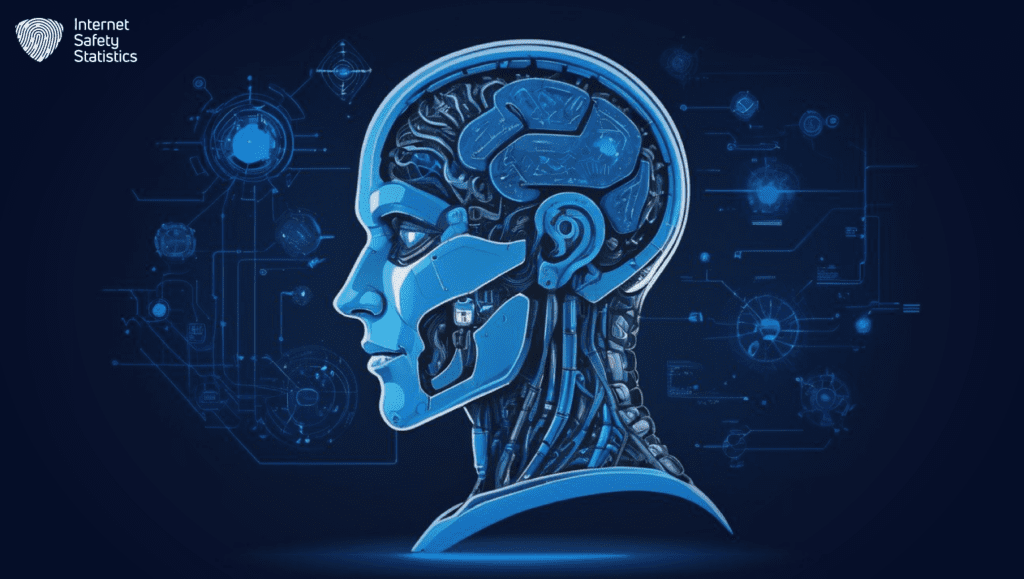
The digital world is a sprawling battlefield, and cyber threats are the ever-present weapons of choice for malicious actors. Traditional security measures are often outmatched by the sheer volume and sophistication of these attacks. But enter Artificial Intelligence (AI), a revolutionary weapon in the fight for cybersecurity. AI offers a powerful arsenal of tools that can enhance your defences, predict attacks, and respond with lightning speed.
Here’s how AI is transforming cybersecurity:
1. Superhuman Threat Detection: Imagine a vast ocean of data, with traditional methods like nets struggling to catch small fish. AI submarines, on the other hand, effortlessly navigate the depths, pinpointing even the tiniest anomalies.
- AI algorithms analyse immense datasets in real-time, searching for subtle patterns and indicators of compromise (IOCs) that might go unnoticed by human analysts. This proactive threat detection allows you to identify and neutralise attacks before they even cause damage.
2. Lightning-Fast Response and Remediation: Picture a superhero rushing to the rescue, but instead of a cape, they have a lightning bolt. That’s AI in action!
- AI can automate initial response tasks, like isolating compromised systems, notifying security teams, and even initiating countermeasures like blocking malicious traffic. This rapid response significantly minimises the impact of a cyberattack, buying you precious time to strategise further actions.
3. Proactive Vulnerability Management: Imagine a vigilant knight constantly scanning a castle for weak points, patching them up before attackers can exploit them. That’s AI for your vulnerabilities!
- AI can automate vulnerability scanning and prioritisation, focusing on the most critical ones for immediate patching. This proactive approach keeps your systems and networks one step ahead of attackers, leaving them with fewer entry points to exploit.
4. Enhanced User Authentication: Think of a digital fortress with multiple layers of security, with AI as the ultimate gatekeeper.
- AI can analyse user behaviour, device characteristics, and even typing patterns, identifying and preventing unauthorised access attempts. This multi-layered approach makes it much harder for attackers to impersonate legitimate users and gain access to sensitive systems.
5. Predictive Threat Intelligence: A futuristic crystal ball showing glimpses of future cyber threats, thanks to AI’s predictive power.
- AI can analyse data from various sources, including dark web forums and social media, to identify emerging threats and attack trends. This proactive intelligence gathering allows you to anticipate attacker tactics and adapt your defences accordingly, staying ahead of the curve in the ever-changing cybersecurity landscape.
Leveraging AI in cybersecurity is not just about technological advancements; it’s about a paradigm shift. By embracing AI, you can move from reactive defence to proactive protection, ultimately making the digital world a safer place for everyone.
| Applications of AI in Cybersecurity | Description | Benefits | Potential Challenges |
|---|---|---|---|
| Threat Detection & Prevention | AI-powered systems analyze vast amounts of data (network traffic, user behaviour, etc.) to identify anomalies and malicious patterns indicative of cyberattacks. | – Proactive threat detection, even for zero-day attacks. – Reduced false positives and alert fatigue. – Improved efficiency and resource allocation. | – Data quality and quantity are crucial for accurate detection. – Explainability and transparency of AI decisions are vital. – Human expertise remains essential for validation and response. |
| Vulnerability Management | AI-powered systems analyse vast amounts of data (network traffic, user behaviour, etc.) to identify anomalies and malicious patterns indicative of cyberattacks. | – Faster identification and patching of vulnerabilities. – Reduced risk of successful cyberattacks. – Improved overall security posture. | – Integration with existing security tools and workflows is key. – False positives in vulnerability identification can be costly. – Continuous AI training and updates are necessary. |
| Incident Response & Forensics | AI algorithms automate vulnerability scanning and prioritisation, focusing on the most critical vulnerabilities to patch first. | – Faster and more efficient incident response. – Reduced damage and downtime from cyberattacks. – Improved understanding of attacker tactics and techniques. | – Access to relevant data sources is critical. – Balancing automation with human judgment is essential. – Ethical considerations in incident response are important. |
| Security Automation & Orchestration | AI orchestrates various security tools and processes, automating routine tasks and freeing up human analysts for more strategic work. | – Increased efficiency and productivity of security teams. – Reduced human error and improved consistency. – Scalability to handle complex security environments. | – Careful planning and design of automation workflows are necessary. – Security orchestration requires robust communication and integration. – Human oversight and control remain crucial. |
Addressing Breach Risks with AI
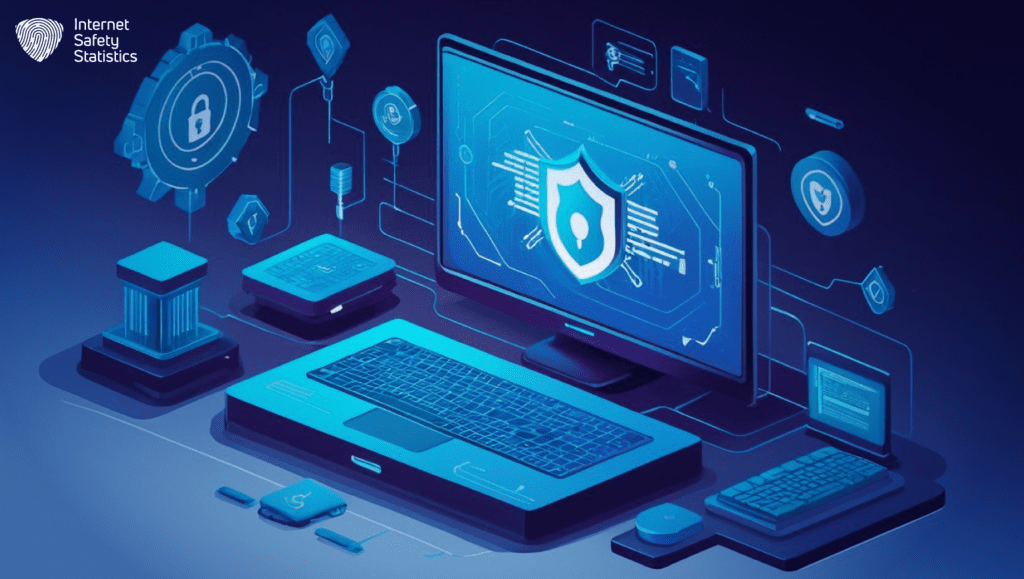
By monitoring and analysing user behaviours and network traffic, AI can pinpoint potential indicators of compromise, thus preemptively addressing breach risks before they escalate.
AI in cybersecurity plays a pivotal role in endpoint security by continuously monitoring and analysing endpoint activities to identify and neutralise security threats. AI systems can proactively respond to endpoint security incidents, preventing potential breaches and minimising the impact of cyber attacks on organisational resources.
AI enhances incident response by analysing data and suggesting optimal predefined responses to security incidents, empowering human teams to make informed decisions. This not only reduces response times but also ensures consistent and effective handling of security events, bolstering the overall security posture of organisations.
Drawbacks of AI in Cybersecurity
AI in cybersecurity can also have some disadvantages, such as:
False Positives and Alert Fatigue
AI systems learn from past data, so novel threats or unusual patterns can trigger false positives, overwhelming security teams with alerts and potentially masking real threats. This can lead to “alert fatigue,” where analysts miss genuine danger amidst the noise.
Bias and Discrimination
AI algorithms can inherit biases from the data they’re trained on. Biased data can lead to discriminatory decisions, like blocking legitimate users or profiling specific groups based on inaccurate assumptions. This raises ethical concerns and undermines trust in AI-powered security.
Lack of Explainability and Transparency
Complex AI models often lack transparency in their decision-making, making it difficult to understand why certain threats are flagged or how vulnerabilities are scored. This makes it hard to audit, debug, or improve AI systems effectively.
Security Vulnerabilities
AI systems themselves can become targets for attacks. Hackers could exploit vulnerabilities in the algorithms or data to manipulate results or launch cyberattacks through the security system itself.
Cost and Expertise
Implementing and maintaining AI-powered security solutions requires specialised hardware, software, and skilled personnel, making it financially and technically challenging for some organisations, particularly smaller ones.
Enhancing Cybersecurity with AI Technology
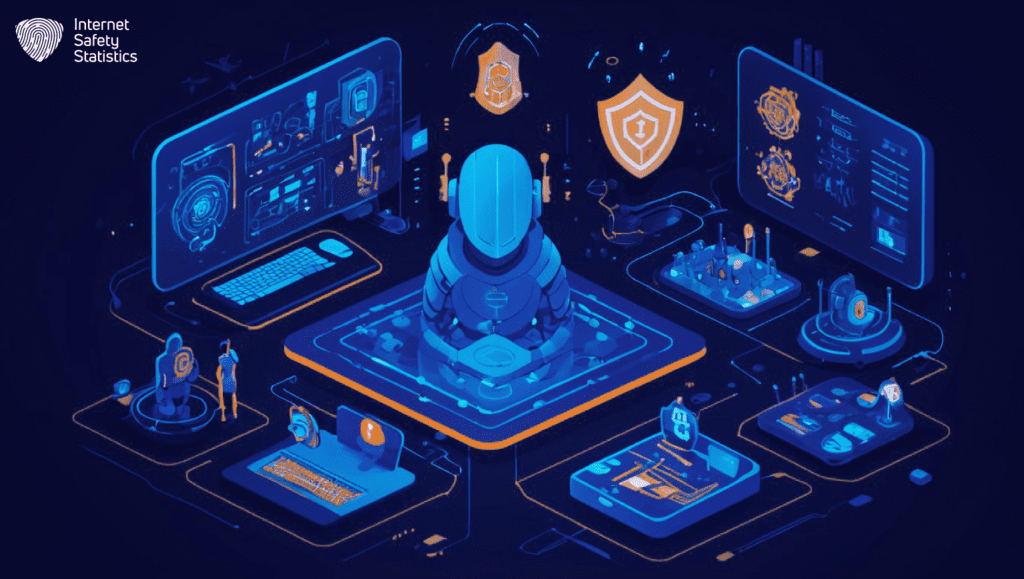
As AI continues to evolve, the prospects for enhanced security operations, threat detection, and incident response are immense. The use of AI is shaping the future of cybersecurity teams by augmenting human intelligence with AI-driven capabilities, enabling security professionals to adapt to the dynamic and complex nature of cyber threats.
Potential advancements in using AI for cybersecurity include the development of generative AI for adaptive security measures, AI-powered automation for security operations, and the integration of AI technologies into security operation centres to drive cybersecurity resilience and responsiveness.
AI-powered solutions offer a range of benefits for enhancing cybersecurity:
- Advanced Threat Detection and Analysis: AI algorithms can analyse vast amounts of data in real-time, identifying subtle anomalies and patterns that might indicate a cyberattack. This allows for proactive threat detection, even before attackers can launch their full assault.
- Automated Response and Remediation: Once a threat is identified, AI can trigger automated responses to contain the damage and neutralise the attack. This rapid response capability can significantly minimise the impact of a cyberattack.
- Vulnerability Management: AI can continuously scan systems and networks for vulnerabilities, prioritising the most critical ones for patching. This proactive approach to vulnerability management helps to close security gaps before attackers can exploit them.
- Enhanced User Authentication: AI can analyse user behaviour and device characteristics to detect fraudulent login attempts. This can help to prevent unauthorised access to sensitive data and systems.
- Threat Intelligence Gathering: AI can aggregate and analyse data from various sources, such as dark web forums and social media, to identify emerging threats and attack trends. This proactive intelligence gathering allows organisations to stay ahead of the attackers.
Here are some specific examples of how AI is being used in cybersecurity:
- Deep learning algorithms are being used to detect malware and phishing attacks with high accuracy.
- Machine learning models are being used to predict cyberattacks and prioritise security resources.
- Natural language processing (NLP) is being used to analyse security logs and identify suspicious activity.
AI is a double-edged sword that can both help and harm cybersecurity. By using a balanced, holistic, and risk-informed approach, security teams can leverage AI for better protection against cyber threats.
